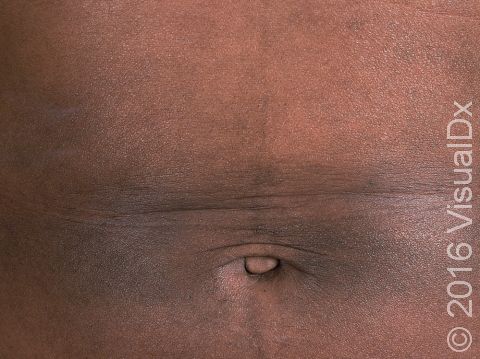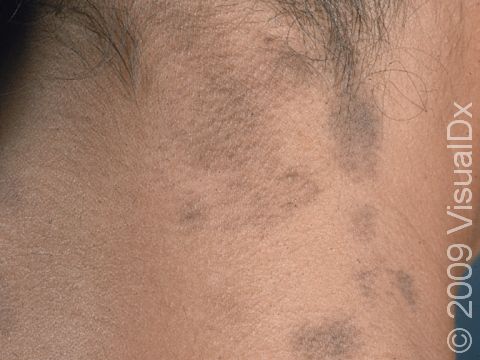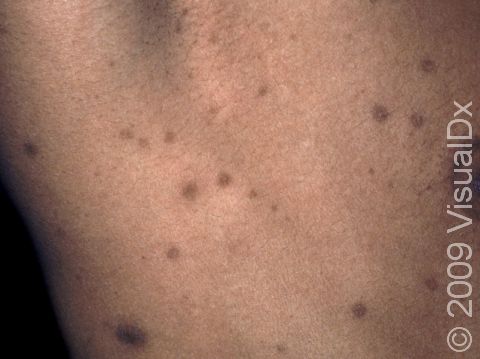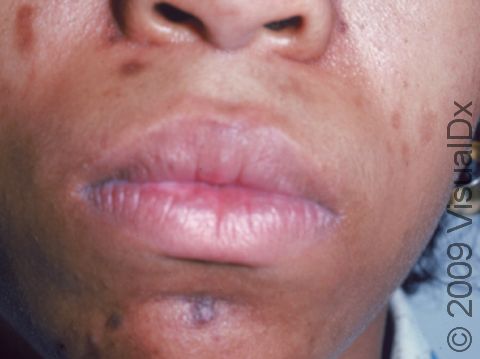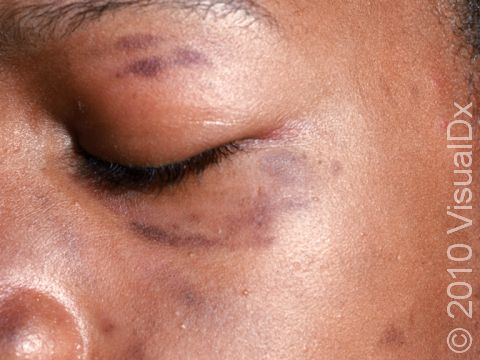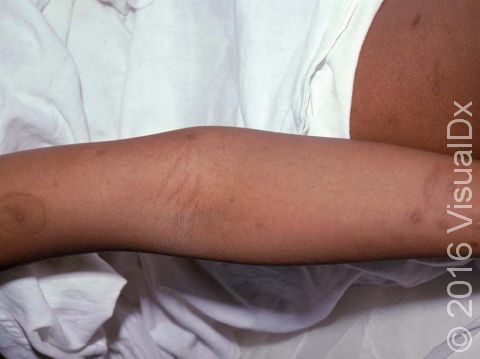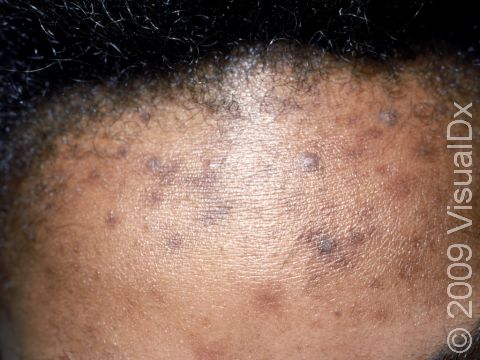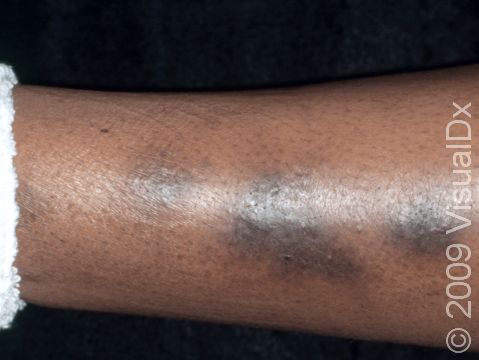Post-Inflammatory Hyperpigmentation
Post-inflammatory hyperpigmentation is darkening of the skin in an area of prior injury or skin disorder from increased pigment (melanin) left from the healing process. Sometimes the darkening may also be due to an iron pigment left behind when old red blood cells die. Acne is a common cause as well as any type of skin injury (scrapes, cuts, burns, insect bites, or chronic rubbing) or many other skin disorders, such as eczema (atopic dermatitis).
Who's At Risk?
Dark-skinned individuals are more likely to have post-inflammatory hyperpigmentation.
Signs & Symptoms
One or more areas of darker brown or sometimes red-brown discoloration. The appearance varies in size, shape, and location depending upon the cause of skin injury. Acne tends to leave light to dark brown spots on the face or trunk. Burns, insect bites, cuts, or scrapes often affect exposed areas on the arms and legs.
Self-Care Guidelines
Most post-inflammatory pigment fades with time, although it takes many months, and some areas never fade (particularly on the legs).
- Since sunlight may cause further darkening, protect yourself from sun exposure with clothing, a hat, and sunscreen (SPF 15 or more).
- You may be able to use makeup to cover the affected areas. Waterproof makeup is available for use on arms and legs.
- If you have an underlying skin disorder such as acne, seek medical care.
- While bleaching creams are available over the counter (0.5–2% hydroquinone in the US and stronger, but possibly dangerous, concentrations overseas), weaker forms have limited effectiveness, and there is some concern about their safety. In fact, the Food and Drug Administration (FDA) is considering removing them from the market. If you do try them, stop using them if there is no improvement after 4–6 months of use. The stronger foreign products may worsen pigmentation with overuse or cause permanent pigment loss, so DO NOT USE THEM.
- Cocoa butter and aloe are common home remedies, but they have not been proven to be effective.
- Cortisone creams should not be used unless recommended by your physician, as they thin the skin with prolonged use.
Treatments
Some creams may help fade dark marks. These include 2–4% hydroquinone, tretinoin, tazarotene, azelaic acid, and glycolic acid. These products are often used in combination. Chemical peels or microdermabrasion are treatments not generally covered by insurance and need to be repeated monthly for a total of 4–6 sessions. If not done by experts, they may cause further irritation and darkening.
Visit Urgency
If the discoloration is distressing to you or you have a chronic skin condition leading to the darkening, seek medical advice. Also see your doctor if you notice a general change in skin color without any obvious explanation.
Trusted Links
References
Bolognia, Jean L., ed. Dermatology, pp.975-1004. New York: Mosby, 2003.
Freedberg, Irwin M., ed. Fitzpatrick’s Dermatology in General Medicine. 6th ed, pp.819, 823, 2141, 2537. New York: McGraw-Hill, 2003.
Last modified on October 5th, 2022 at 7:50 pm

Not sure what to look for?
Try our new Rash and Skin Condition Finder
